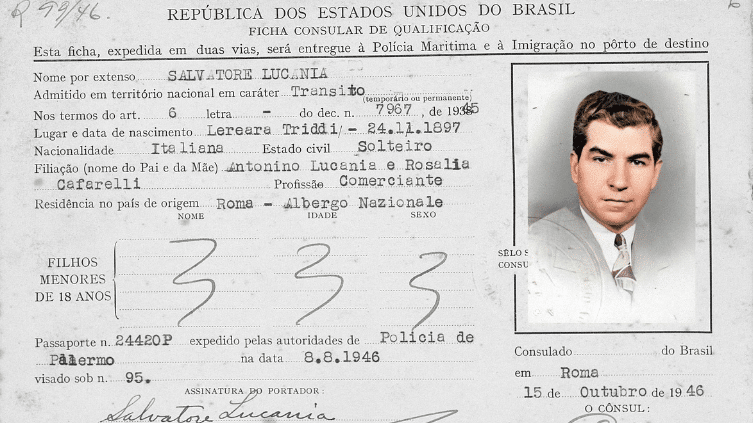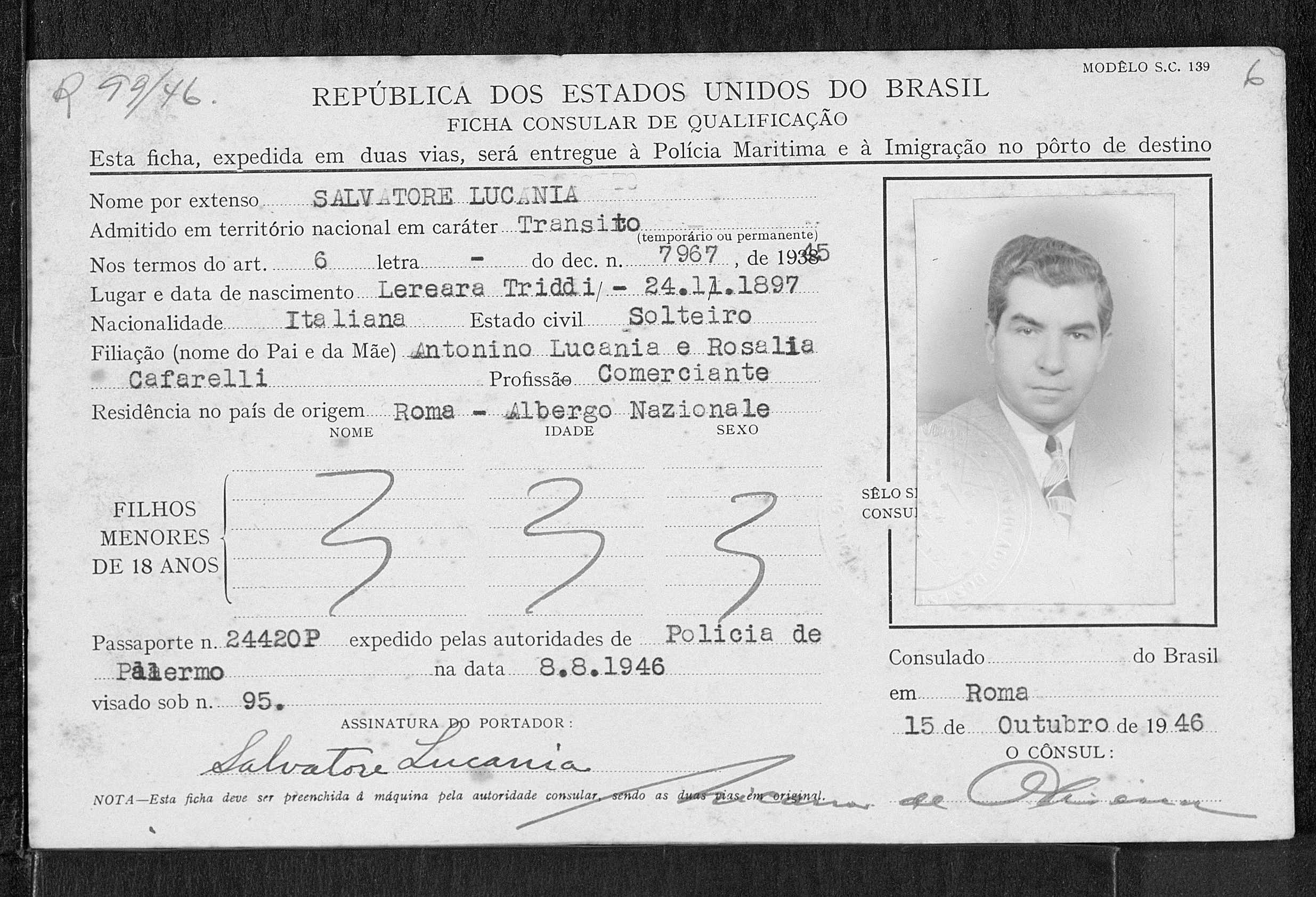Havana Conference Organizer Found in the Rio de Janeiro Immigration Cards Collection on MyHeritage
- By Roi Mandel ·


In a fascinating journey through the annals of organized crime history, an extraordinary document from the Brazil, Rio de Janeiro, Immigration Cards, 1900-1965 collection revealed the remarkable story of one of the most iconic Mafia figures of the last century: Charles “Lucky” Luciano. The immigration document marked Luciano’s arrival in Brazil, which served as a stepping stone on his path to his final destination — Cuba. This pivotal transit point set the stage for a significant chapter in Mafia history.
The immigration document records Luciano’s arrival in Brazil, an important stop on his journey to Cuba, where Luciano would organize what came to be known as the Havana Conference: a significant gathering of United States Mafia and Cosa Nostra leaders to discuss vital mob policies, rules, and business interests.
The birth of the modern mafia
Born Salvatore Lucania in Lercara Friddi, Sicily, on November 24, 1897, Luciano immigrated to the United States in 1906. The young immigrant soon found himself deeply entrenched in New York’s criminal underworld.
Luciano’s crowning achievement was the establishment of a modern structure for the Italian American Mafia. He crafted it into five distinct “families,” effectively quelling the bloody turf wars that previously plagued their operations. At the same time, he fostered collaboration, enabling the Mafia to expand its power and reach exponentially. Along with his colleague Meyer Lansky, Luciano played a critical role in creating the National Crime Syndicate, an alliance of Italian-American and Jewish mobsters.
Luciano’s unexpected role in World War II
In 1936, Charles “Lucky” Luciano was arrested and prosecuted by for running a vast prostitution ring in New York. Convicted on charges of compulsory prostitution, Luciano was sentenced to 30 to 50 years in prison.
During World War II, while serving his sentence, Lucky Luciano was approached by the U.S. Office of Naval Intelligence (ONI). Fearing sabotage of the East Coast ports by Axis powers, the ONI sought Luciano’s influence over the dockworkers to ensure their security. In exchange for a commutation of his sentence, Luciano agreed, leveraging his underworld connections to protect American ports. Additionally, he offered crucial strategic insights that assisted the U.S. military during the invasion of Sicily in 1943. Luciano’s contributions were significant enough to secure his early release from prison in 1946, under the condition of deportation to Italy.
At this point in time, the idea of the meeting in Havana, far from the eyes of the American police and free from the concern of being arrested, was probably born. In late September, Luciano obtained two Italian passports issued in his real name, Salvatore Lucania, with visas for Mexico, Cuba, and Brazil. Luciano was now able to visit the Western Hemisphere and meet with criminal associates from the U.S. In late October, Luciano traveled from Italy to Caracas, Venezuela, Mexico City, Rio de Janeiro, Brazil and finally Havana.
The Havana Conference and the shift in power
The Havana Conference in December 1946 stands out as a historic moment where Luciano sought to reassert his authority over the American underworld from his exile. High on the agenda were the expansion into Las Vegas and the narcotics trade.
Despite his ambition to regain his position as the “capo di tutti capi” or “boss of all bosses,” increased scrutiny from the U.S. government, who were alerted to his plans, led to a shift in the Mafia’s power dynamics.
One of the more famous participants at the Havana conference was none other than Frank Sinatra. The cover story for the conference was a gala party featuring a performance by the famous singer.
Sinatra flew to Havana with two of Al Capone’s cousins. One of them, Joseph “Joe Fish” Fischetti, an old Sinatra acquaintance, acted as Sinatra’s chaperone and bodyguard. The cousins delivered a suitcase containing $2 million to Luciano, his share of the U.S. illegal businesses he still controlled.
This iconic event even found its way into popular culture. The film The Godfather Part II contains homage to the Havana Conference when Michael Corleone travels to Havana to have a meeting with several other mob bosses.
Luciano’s influence on American organized crime continued until his death in 1962. His sudden demise at Naples International Airport, Italy, marked the end of an era. As one of the last old-style Mafia bosses, his passing signaled the closure of a chapter of organized crime history.
This incredible story was found in MyHeritage’s historical record collections; who knows what you might discover in your own family’s past? Search the historical records on MyHeritage today and find out!










